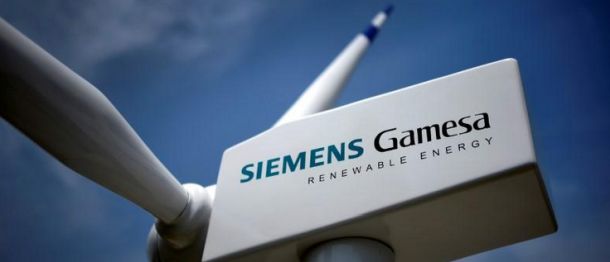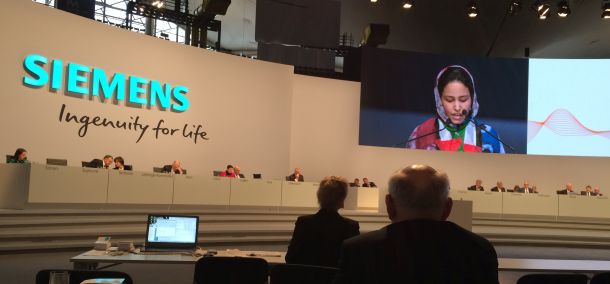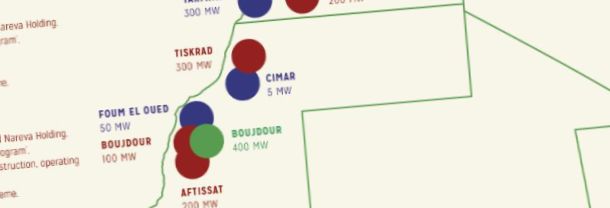
WSRW has again asked Siemens to clarify how they’ve obtained the consent of the people of Western Sahara to their involvement in literally all of Morocco’s wind power plans in the occupied territory.
WSRW has today sent a letter to Siemens, essentially repeating a question which Siemens keeps dodging: have the people of Western Sahara consented to Siemens’ wind turbines being set up in their land?
The name of Siemens recently resurfaced in connection to Morocco's wind energy plans in Western Sahara. As WSRW reported last month, the Kingdom is planning to construct even more wind farms in occupied Western Sahara. There are two companies connected to all of these planned farms: NAREVA, the wind energy company that is owned by the king of Morocco; and Siemens, Germany’s giant engineering company.
In December 2016, Morocco's national electricity agency issued a tender to install a very high tension electricity network in "southern Morocco" - the Moroccan terminology for what is in fact Western Sahara; a territory largely and illegally occupied by Morocco since 1975.
The programme will link two wind farms that were at that time still in the planning phase: the Aftissat plant (200 MW) and the Boujdour farm (400 MW). Both projects will be carried out by Nareva - the energy branch of the royal holding company SNI. And both farms will thus be built in occupied Western Sahara.
While no further info is available about the Boujdour farm, work on the Aftissat is already ongoing, as UK company Windhoist is at present erecting 56 Siemens-Gamesa wind mills - product of the merger between Siemens Wind Power and Gamesa in April this year.

The new plants in Boujdour and Aftissat will add to the two other wind farms that Nareva is constructing in the occupied territory as part of the "integrated wind power project": a programme that includes the construction of five wind farms with the cumulative capacity of 850 MW. Two of those five farms are located in Western Sahara. One of them, a 100 MW farm, will also be built in Boujdour. The other 300 MW wind farm is planned to be constructed in Tiskrad, a town near Western Sahara's capital El Aaiún. The 850 MW programme was accorded to a consortium of firms led by German giant Siemens, who had teamed up with Italy's Enel Green Power and Nareva.
The Moroccan king's wind firm isn't the only one trailblazing the highly controversial wind energy plans in occupied Western Sahara. Up to now, Siemens has a stake in practically all wind farms in the territory:
• Siemens supplied wind mill parts for the operational 50 MW Foum el Oued park;
• Together with Enel Green Energy and Nareva, Siemens won the tender for the construction of the 300 MW Tiskrad wind farm and the 100 MW Boujdour farm.
• Siemens is providing the parts for the construction of the 200 MW Aftissat wind farm.
So far, WSRW has not been able to link Siemens to the 400 MW wind farm which is in the works for Boujdour.
With the new planned wind farms in Boujdour, the share of the production in occupied Western Sahara out of Morocco's total wind energy production, will rise to over 40%.
Siemens again refuses to answer questions about Western Sahara at AGM
For the fourth consecutive year, the German engineering company dodges questions at its Annual Shareholders Meeting as to whether it has obtained the consent of the people of Western Sahara to operate on their land.
Siemens fails to respond Western Sahara question at AGM
Why did you not seek permission from my people?, a Saharawi refugee asked at Siemens AGM. Company fails to answer questions why it operates on occupied land.
Moroccan wind energy in occupied Western Sahara passing 40%
Even more wind farms are being planned in occupied Western Sahara, and all of them are in the portfolio of the Moroccan monarch's company NAREVA.
Siemens dodges questions on Saharawi consent
Why does Siemens not seek the consent of the Saharawis to operate on their land? At the company's Annual Shareholders Meeting, the company failed to answer.


